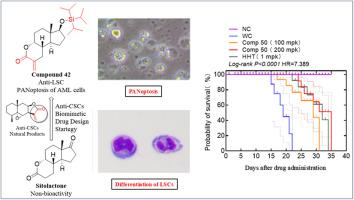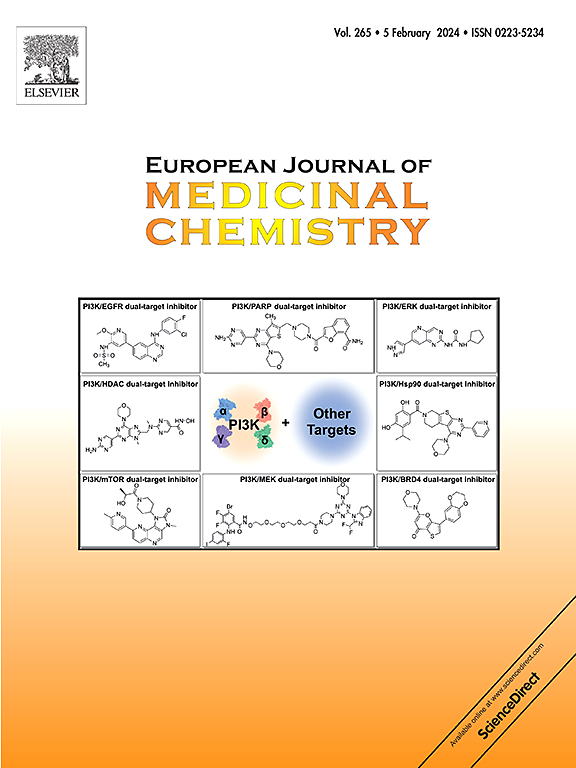Discovery of novel Sitolactone derivative leading to PANoptosis and differentiation of acute myeloid leukemia cells
IF 6
2区 医学
Q1 CHEMISTRY, MEDICINAL
引用次数: 0
Abstract
Acute Myeloid Leukemia (AML) is a devastating hematologic malignancy. Chemotherapy remains the primary treatment, offering rapid disease control and potential complete remission. However, more than half of the patients develop resistance and relapse, significantly reducing patient survival. Research has shown that drug-resistance and recurrence of AML are closely linked to leukemic stemness. Consequently, discovering new anti-Leukemia stem cell (LSC) compounds is a promising strategy for the treatment of AML in clinic. Additionally, the recent focus on inducing non-apoptotic programmed cell death in AML cells presents an alternative direction for therapeutic drug development, targeting current anti-apoptotic pathways. In this study, novel Sitolactone analogues, potential anti-LSCs compounds, were designed and synthesized based on the “biomimetic design” strategy. Compound 42 was found to significantly inhibit proliferation of AML cells. Subsequent biological evaluation revealed that this compound not only reduced the population of LSCs but also effectively induced PANoptosis in AML cells. Given the active compound's poor water solubility, a prodrug modification strategy was employed to enhance in vivo delivery with superior oral bioavailability and PK properties. This approach significantly suppressed AML cell growth in a mouse orthotropic model with favorable in vivo tolerance.

求助全文
约1分钟内获得全文
求助全文
来源期刊
CiteScore
11.70
自引率
9.00%
发文量
863
审稿时长
29 days
期刊介绍:
The European Journal of Medicinal Chemistry is a global journal that publishes studies on all aspects of medicinal chemistry. It provides a medium for publication of original papers and also welcomes critical review papers.
A typical paper would report on the organic synthesis, characterization and pharmacological evaluation of compounds. Other topics of interest are drug design, QSAR, molecular modeling, drug-receptor interactions, molecular aspects of drug metabolism, prodrug synthesis and drug targeting. The journal expects manuscripts to present the rational for a study, provide insight into the design of compounds or understanding of mechanism, or clarify the targets.

 求助内容:
求助内容: 应助结果提醒方式:
应助结果提醒方式:


